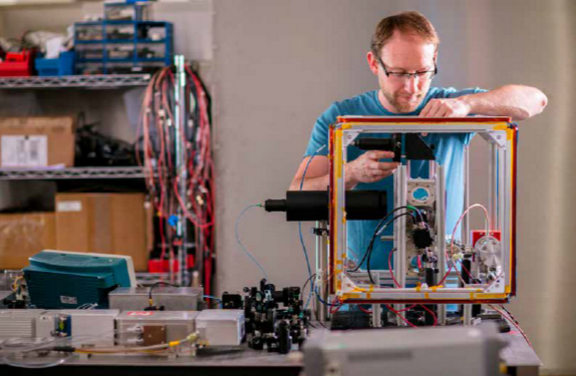

What is your role and how did you arrive at your current position? I am a Quantum Technology Scientist, working in the Innovation division. My background is in cold atoms physics. I did my PhD on Bose-Einstein condensates of rubidium at the University of Georgia in the US. From there I joined the University of Birmingham as a postdoc. I spent my first year at the National Physical Laboratory in Teddington working on their strontium lattice clock and then continued that research in Birmingham for the next two years. I became familiar with M Squared by using SolsTiS lasers in our experiments and as part of my work in the Birmingham-led UK Quantum Technology Hub for Sensors and Metrology. What time do you wake up? 6:30 am (I have a dog to walk). When do you start? Between 8:45 and 9 am.

What is the first thing you do when you arrive at work? Must. Have. Coffee. What attracted you to your career? While in Birmingham I was able to focus my research on developing quantum technologies for future commercial applications. As a postdoc, I was always aware that my position was temporary, so there was uncertainty associated with how long I could stay there and where I would go next. Transitioning from academia to industry seemed like a natural progression. At M Squared I can continue doing research much like at a university, but now I am also motivated by the prospect of seeing my research turn into an actual product. M Squared is also a young but rapidly growing company, and the quantum technology research projects are still relatively new, so it was a very exciting time for me to join the company. What have been your biggest challenges in this role? Transitioning from academia to industry is what attracted me to M Squared, it was also the biggest challenge. In academia, the pressure is to focus on publications and secure funding for continuing experiments as part of a team, but with the goal of adding to your CV for personal career progression--the so-called 'publish or perish' mindset. While there is overlap with these aims in industry, the main focus is to advance the capabilities of the company. I still derive immense personal pride in my work, but it is the advancement of the company as a team that is the most important. This subtle shift in mindset has been challenging but greatly rewarding. Describe your workspace I spend about half my time working on the computer at my desk and the other half of my time physically working on the experiment. The experiment is located in a walled-off bay near other Innovation experiments. We have an optical table that holds our SolsTiS, all the optics for an interferometer and locking our lasers, and a vacuum chamber with electromagnetic coils. We also have an electronics rack for power supplies, a fibre Raman laser, RF electronics, ICE BLOCs, and DCS sequencer for experimental control. It is very much like a lab in any other research institution, except the entire experiment is designed to be transferred to a transportable cube that can be taken to external locations for working demonstrations. What kind of tools do you work with? This job requires a very versatile set of skills. Sometimes we need to design our own electronics, so we need to use things such as soldering irons as well as basic machining tools for the electronics housings. Much of the work obviously involves setting up and handling various types of optics, including optical fibres. Occasionally (but hopefully not too often!) work also needs to be done on the vacuum chamber. The tools required for this may include ultrasonic baths, ion and turbo pumps, and vacuum chamber ovens. Many other odd jobs often arise which require you to be creative with the tools you have available. Who do you interact most with? Mostly with the other quantum technology scientists in my team. The interferometer project is very involved and requires a collaborative effort from a number of people to accomplish our goals on time. How often do you get out of the office? I am still pretty new to the company, so I have not had many opportunities to get out much yet. There are, however, external meetings that sometimes require the attendance of someone in our team. What do you most look forward to each day? I look forward to seeing the results of a nice measurement I have been working on. Nothing beats debugging an experiment and seeing the expected results come out correctly for the first time. What or who inspires you? I am most inspired by the potential contributions I can make to the product portfolio of M Squared. In my academic career, I was able to develop working prototypes, but I never had the opportunity to see my research become a fully commercialised product. With the number of projects and new directions M Squared is working towards, I expect to play a central role in developing some of the first commercial products of their kind in the world. This is incredibly exciting to me. What do you do for lunch? I bring lunch from home and usually eat with the other members of the Innovation research team. When possible, we like to try to eat outside and enjoy the fresh air. Describe your best day at work to date. My best day at work was when we observed Ramsay fringes in our own interferometer chamber for the first time. This was a major milestone for our experiment - delivering within the expected timeframe and demonstrating that our work so far was on the correct track. How does the working day end? I try to reach a natural stopping point in whatever work I am doing. I make sure all of the work I have done has been summarised in my lab notebook and that all important information has been recorded. The last thing I do is switch off all the lasers and electronics used to run the experiment. What time do you get home? Usually around 18:30 to 18:45.


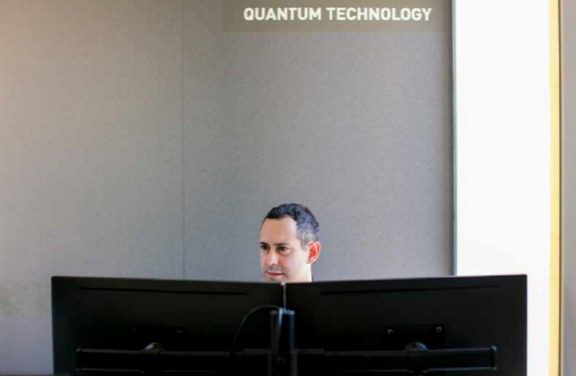

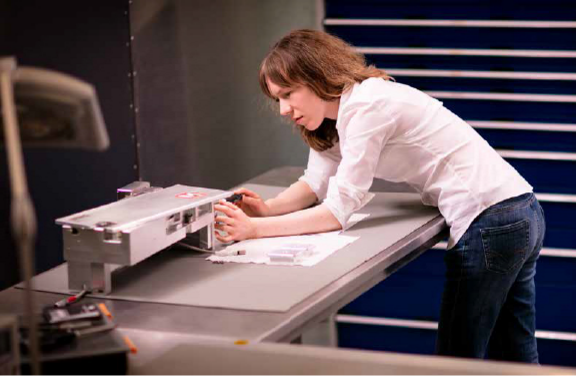



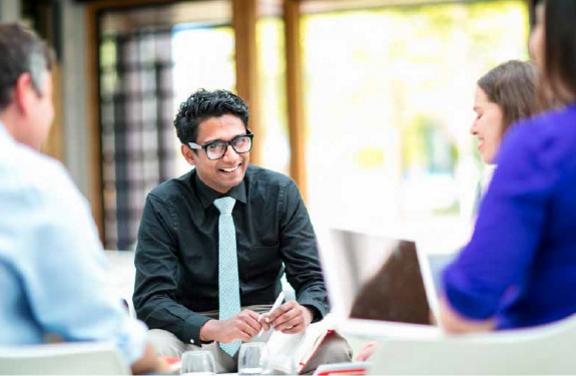

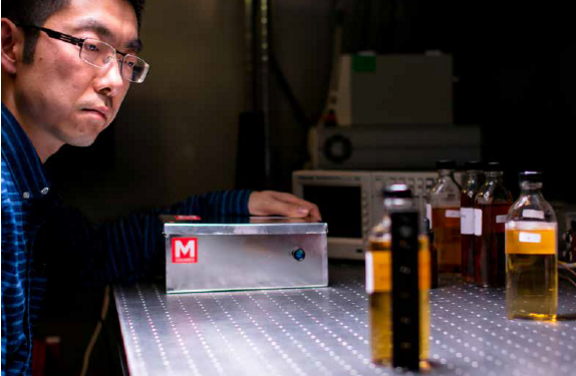

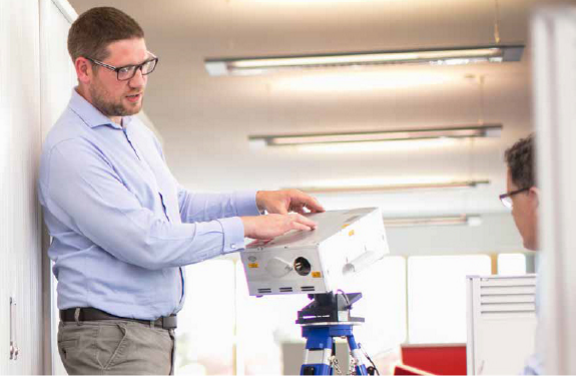

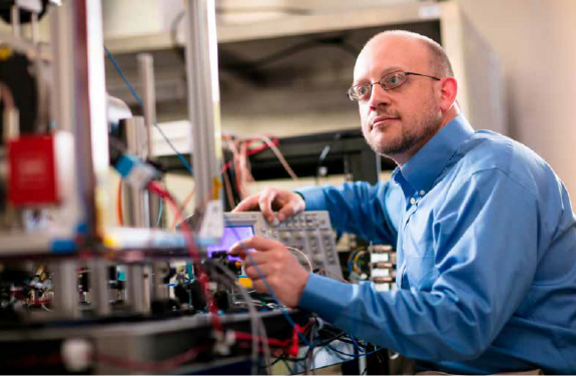

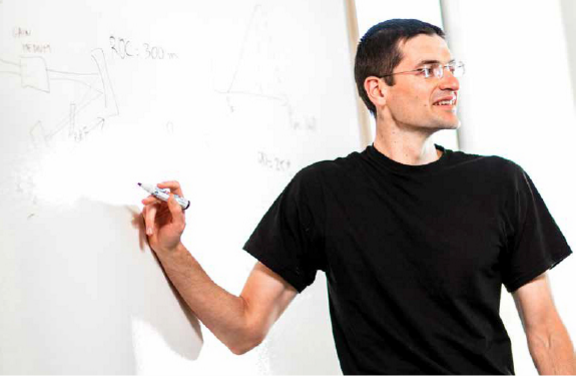

Phone +44 (0)141 945 0500
Head Office
Phone +1-617-401-2368
USA
Phone +44 (0)1483 685170
M Squared Life